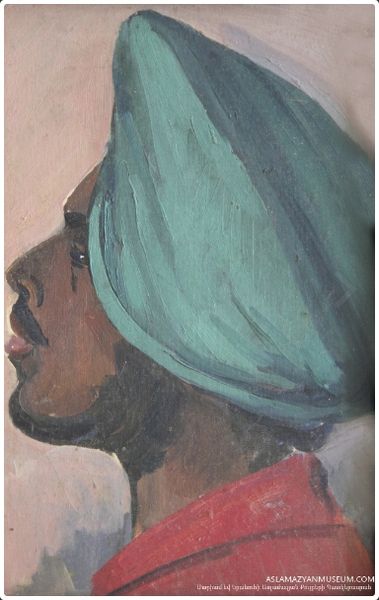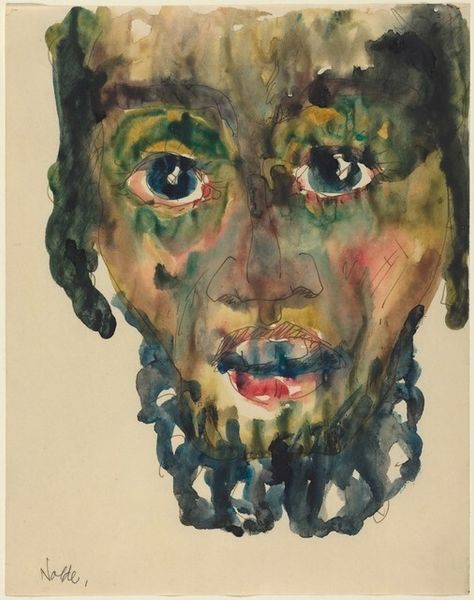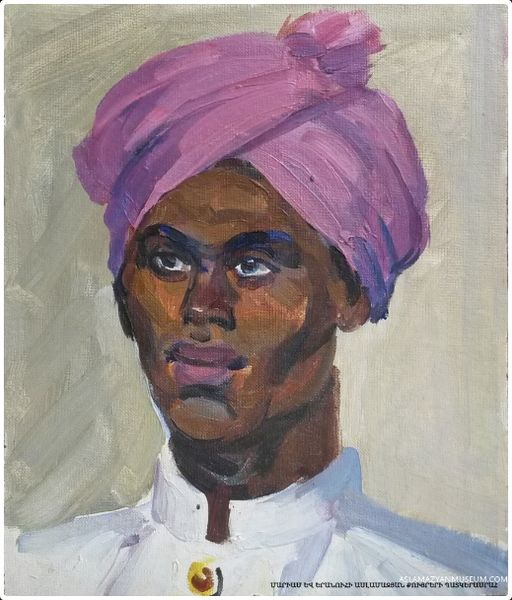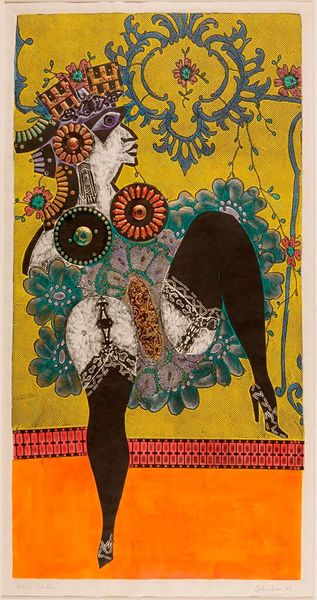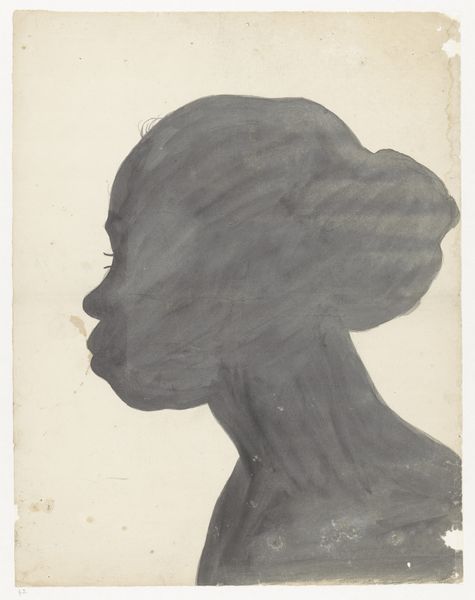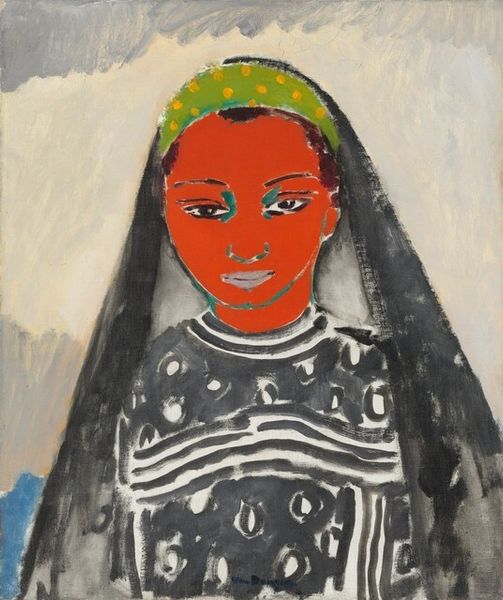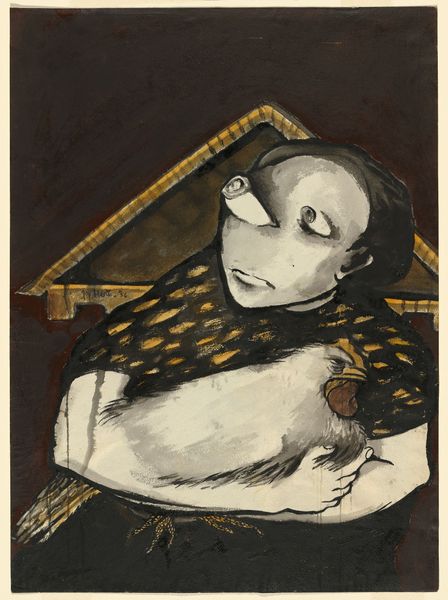
painting, acrylic-paint
#
portrait
#
african-art
#
painting
#
pop art
#
acrylic-paint
#
figuration
#
naive art
Dimensions: 60.96 x 41.91 cm
Copyright: Clementine Hunter,Fair Use
Curator: Today, we are looking at "Black Matriarch," a painting by Clementine Hunter, created around 1970. Editor: My initial response is quite powerful. The stark contrast of the black silhouette against the pale background, paired with the bold, colorful head wrap, it just immediately grabs your attention. Curator: It's quintessential Hunter, isn’t it? The composition is deceptively simple, but Hunter masterfully represents African American life through her distinctive style and limited palette. Editor: The flat perspective and vibrant colors certainly point toward her 'naive art' approach. And the 'matriarch' title carries so much weight. Given that it was painted in 1970, how might the social and political context of the Black Power movement be relevant? Curator: Absolutely. It's crucial to acknowledge the broader context. Clementine Hunter lived and worked at Melrose Plantation in Louisiana, and her paintings offer invaluable glimpses into plantation life from the perspective of a Black woman. Editor: I'm curious about her artistic training – or the lack thereof. To what extent did this self-taught nature influence her distinctive style and subject matter? Curator: Hunter didn't begin painting until she was in her 50s and she embraced a 'naive' or self-taught style. Her work captures scenes from daily life like picking cotton and washing clothes, but they also reflect her strong sense of community. Editor: The head wrap really stands out for me. Is this simply decorative or is there more meaning? The patterns remind me a lot of the african head wraps women still wear to this day as symbols of beauty and self expression. Curator: Headwraps were—and continue to be—powerful symbols of identity and resistance, especially within the African diaspora. And Hunter’s use of it here is definitely something we must acknowledge and honor in her overall legacy as a black women artist of the 20th century. Editor: Thinking about it this way really deepens the painting’s narrative for me. I now see it not only as portraiture but as social commentary that transcends the canvas itself. Curator: Yes! Seeing Hunter's "Black Matriarch" with this multi-layered context can prompt us to re-evaluate our own perceptions and expectations of Black artists. Editor: And understanding this helps us further to acknowledge Hunter's rightful position in art history, and beyond that to recognize and appreciate these under-told histories of folk art, self-taught artistry and marginalized perspective.
Comments
No comments
Be the first to comment and join the conversation on the ultimate creative platform.

